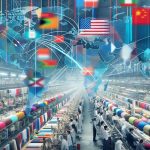When you consider fleece, you might think about its warmth and comfort, but have you ever wondered about its environmental impact? While fleece often comes from recycled materials, the production process and subsequent microplastic pollution raise significant concerns. You'll want to weigh the benefits of using recycled plastic against the energy and resources needed to create fleece. As you explore this topic, you might find yourself questioning whether there are better alternatives that align with eco-conscious values. What options exist that could provide the same warmth without the environmental trade-offs?
Table of Contents
Key Takeaways
- Fleece made from recycled polyester reduces landfill waste, but not all fleece contains recycled content, impacting its eco-friendliness.
- The production process of fleece involves energy consumption and chemical use, contributing to environmental pollution and a significant carbon footprint.
- Washing fleece releases microplastics into waterways, which can harm marine life and pose health risks through the food chain.
- Fleece garments are durable and designed for longevity, reducing textile waste when cared for properly.
Fleece Material Sources
Fleece is primarily made from polyester, which often comes from recycled plastic bottles, making its source both innovative and environmentally impactful. By choosing fleece made from recycled materials, you're contributing to a reduction in landfill waste and supporting a circular economy. Instead of seeing plastic bottles as trash, manufacturers transform them into something useful, giving them a second life.
When you wear fleece, you're not just enjoying warmth and comfort; you're also participating in a sustainable practice. Many brands are committed to sourcing their polyester from recycled materials, which means you can make a more informed choice about your clothing.
However, it's important to recognize that not all fleece is created equal. Some fleece products may still use virgin polyester, which doesn't offer the same environmental benefits. So, when shopping, look for labels that specify the use of recycled content.
Additionally, some companies are exploring natural fibers, but polyester remains the dominant material due to its durability and performance. By understanding the sources of fleece, you can make choices that align with your values, ensuring that your wardrobe reflects your commitment to sustainability.
Production Process Impact
Understanding the production process of fleece reveals how it can impact the environment, even when sourced from recycled materials. The transformation of plastic bottles into fleece involves several steps, each contributing to energy consumption and emissions.
Here's a brief overview of the production process and its environmental implications:
| Stage | Environmental Impact |
|---|---|
| Collection | Requires energy for transportation and sorting. |
| Processing | Uses chemicals and water, potentially leading to pollution. |
| Manufacturing | Involves energy-intensive machinery, increasing carbon footprint. |
| Distribution | Emissions from transportation to retailers and consumers. |
While recycling plastic helps reduce waste, the production stages still contribute to environmental degradation. You might think that using recycled materials is a step in the right direction, but the overall impact can still be significant. It's crucial to consider these factors when evaluating the eco-friendliness of fleece products. By understanding the full production cycle, you can make more informed choices about the fleece items you purchase and their long-term effects on our planet.
Microplastic Pollution Concerns
Many consumers are unaware that washing fleece garments can release tiny microplastics into our waterways, contributing to a growing pollution problem. When you toss your fleece in the wash, tiny fibers shed from the fabric and make their way into the water supply. These microplastics can be as small as 5mm, and they're not easily filtered out by wastewater treatment plants.
Once they enter rivers, lakes, and oceans, these microplastics can be ingested by marine life, leading to harmful effects on ecosystems. You might think it's just a small amount, but collectively, millions of people washing fleece contribute to a significant issue.
Additionally, these microplastics can accumulate in the food chain, affecting not only fish but also the animals and humans who eat them. This creates a cycle of pollution that raises concerns about health risks associated with consuming contaminated seafood.
To mitigate this problem, consider using a Guppyfriend bag or a similar filter that captures microfibers during the wash. You can also opt for more sustainable fabric choices or limit washing fleece to reduce your impact on microplastic pollution.
Longevity and Durability
When you invest in fleece garments, you're often choosing pieces known for their longevity and durability, which can make them a worthwhile addition to your wardrobe. Fleece is designed to withstand regular wear and tear, making it suitable for outdoor activities and everyday use. Unlike some fabrics that fray or lose shape after a few washes, fleece typically maintains its structure and softness over time.
You'll find that many fleece products are resistant to pilling, thanks to their unique fiber construction. This means you won't have to worry about those annoying little balls of fabric forming after a few uses. Additionally, fleece is lightweight yet warm, allowing you to wear it comfortably in various conditions without sacrificing style.
The durability of fleece also translates into a longer lifespan for your garments. With proper care, such as following washing instructions and avoiding high heat, your fleece items can last for years. This means fewer replacements and less waste, which is important in today's eco-conscious world.
Sustainable Alternatives to Fleece
If you're looking for eco-friendly options, consider sustainable alternatives to fleece that offer similar warmth and comfort without the environmental impact.
One great option is organic cotton. It's soft, breathable, and produced without harmful pesticides, making it a healthier choice for both you and the planet.
Another alternative is hemp fabric. Hemp is a fast-growing, renewable resource that requires minimal water and no chemical fertilizers. It's durable, insulating, and gets softer with each wash, making it an excellent choice for outerwear.
Recycled polyester is also a viable option. While it's still a synthetic material, it's made from post-consumer plastic bottles, reducing waste and minimizing the need for new resources. Look for brands using recycled polyester that prioritize sustainable practices.
Lastly, consider wool from ethical sources. Merino wool, for instance, is biodegradable and has natural insulating properties, keeping you warm without the environmental toll associated with synthetic fibers.
Frequently Asked Questions
Can Fleece Be Recycled After Its Lifecycle Ends?
Yes, fleece can be recycled after its lifecycle ends, but it often requires specialized facilities. You should check local recycling programs or textile recycling options to ensure your fleece gets properly processed and reused.
What Are the Health Implications of Wearing Fleece?
Wearing fleece can lead to skin irritation for some people, especially if they have sensitivities. It's important to choose high-quality fleece and wash it regularly to minimize potential allergens and maintain comfort during wear.
How Does Fleece Compare to Wool in Terms of Sustainability?
When you compare fleece to wool, you'll find fleece often uses synthetic materials, which can harm the environment. Wool, being natural and biodegradable, usually offers better sustainability, making it a more eco-friendly choice overall.
Are There Certifications for Eco-Friendly Fleece Products?
Yes, you can find certifications for eco-friendly fleece products. Look for labels like Oeko-Tex, Global Recycle Standard, or bluesign. These certifications ensure the materials and processes used meet specific environmental and safety standards.
What Is the Carbon Footprint of Producing Fleece Garments?
The carbon footprint of producing fleece garments varies, but it generally includes manufacturing emissions, transportation, and energy use. You can reduce it by choosing recycled fleece or brands committed to sustainable practices.
- How Does Ring Spun Cotton Affect Garment Fit and Shape Retention? - August 13, 2024
- What Are the Challenges in Producing Ring Spun Cotton? - August 13, 2024
- Is Ring Spun Cotton Suitable for Plus-Size Clothing? - August 13, 2024






